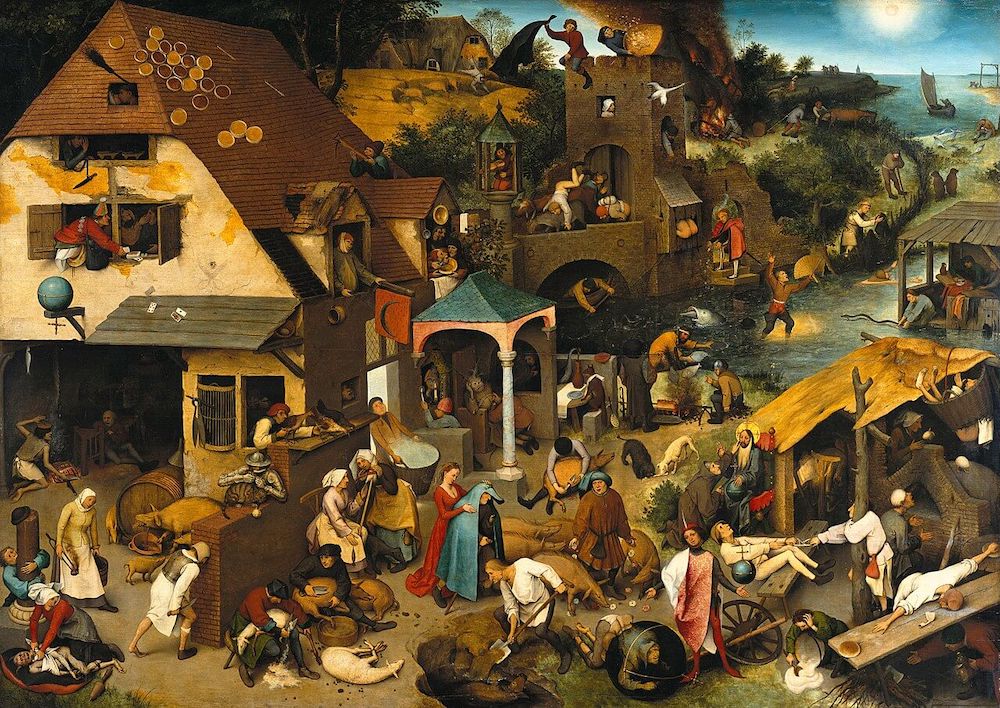What is art and how to enjoy it?
This topic takes a closer look at art—human-made beauty. It will be perfect for those curious who’d like a deeper dive into how we recognize, appreciate, and understand art.

You may be one of those people who become hopelessly bored after simply hearing a word like “painting” or “museum”—but you’d like to figure out the bits where art could be interesting for you after all.
Or on the contrary, you may be one of those who wouldn’t miss a single exhibition at home and go to the art museum as the first destination in travels—and you are happy to learn more about art.
You may even be an art professional (a guide in the art gallery, for instance)—yet from time to time, there’s a piece of art that confuses and befuddles you as if deliberately escaping the grasp of your judgment.
In any of those cases (or anything in between)—welcome aboard!

The word “art” encompasses plenty of objects and activities. A work of art can be tangible (like a sculpture) or intangible (like a dance or a performance piece); it can take space around or near you (like a building) or unfold over time (like a song or a movie); it can take place right here and now, or it can be recorded.
Another way to pigeonhole art is like this: visual art (that you see), auditory art (that you hear), verbal art (that you understand through words), and performing art (everything above mixed together and performed in front of you).

We’ll be reviewing this classification (and provide you with a handy flowchart on how to tell one from another) in the final parts of this set.
We won’t bother you with academic knowledge about the history and theory of art—there are plenty of good books for this purpose. Instead, in this set, we’ll provide you with instruments you could use to enjoy art and share your enjoyment with others.
These instruments begin with questions that one should ask whenever facing a piece of art:
- Is this really art?
- If it is art, is it good or bad?
- Which kind of art is this exactly?
Is this really art?
Art has existed in almost every human culture we know of—for a dozen (or even maybe a hundred) millennia. People had been doing art long before thinking about what art really is.
Perhaps, this is the explanation as to why no theory could catch up with the practice of art. As soon as we thought we had a concrete definition (for example, for visual arts), something new would come up: oil paintings, photography, cinema, digital media, etc.
No matter how many theories and classifications of art have been created since Antiquity, there is always something that slips through the cracks of definitions and frameworks. Art critics always follow artists—and the artists lead the way, even if they are not always aware of it.
That is why there is no single universally accepted answer to the question of whether an object is art. However, art critics and art historians do recognize certain features that separate works of art from non-artistic objects and activities.
We’ll be listing these features of an artwork one by one, from the generally accepted to the more debatable.
The first (and perhaps the only) thing that all art critics agree upon is this: An artwork is something created by humans, which makes it an artifact of human culture.
Not everything we find beautiful and pleasing to the eye was created by people. Coastlines and mountain valleys can be breathtaking, but they can be art only under one condition: a human consciously puts them into an artistic context.

We can say the same about paintings that chimpanzees, elephants, or other animals can draw after humans train them. These paintings resemble works of abstract expressionism—but only a human can find meaning in this.

We shouldn’t discount the possibility of alien art existing somewhere on other planets, but we currently don’t know of any.
The second most accepted feature of an artwork is this: An art object has a purpose that exceeds purely practical usage.
For example, an unpainted vase can store liquids just as well as a painted one—yet vase painting is one of the oldest and most common forms of art.

Sometimes an object can have no practical purpose at all (like a painting)— and exists solely as an object of art.
The third most accepted feature of an artwork is this: Creating this object or performing this activity requires more skill than an everyday task.
The very word “art” comes from the Latin ars, which can also mean craft, skill, trade (consider the word “artisan”). The Greek τέχνη (tékhnē) has a similar meaning. Many cultures across the world up to the Modern era had chiefly seen art as something that needs mastery.
The “Six Arts” of ancient China combined knowledge of rites, music, archery, chariot riding, calligraphy, and mathematics.

And the “Seven liberal arts” of late Antiquity and the Middle Ages in Europe included grammar, logic, rhetoric, geometry, arithmetic, astronomy, and music.
We still sometimes use this meaning of the word, when talking about culinary art or the art of medicine.
Yet, if we want to describe artworks more narrowly, we still need one more definitive feature.
An artwork has to have an aesthetic quality to it—simply speaking, it has to be beautiful.
Appreciating beauty is an age-old experience for humans—even the most ancient authors write about it. However, the period when the Western tradition was defining and evaluating art through the lens of beauty was shorter than you might think—only from the early 17th century (when the concept of fine art was developed) to the early 20th (up to the emergence of avant-garde art).
Unlike the previous ones, this feature of an artwork is extremely hard to discern. Just as there is no single correct definition of art, there is no universal answer as to what beauty is. A little later in the set, we’ll discuss several theories on this.
